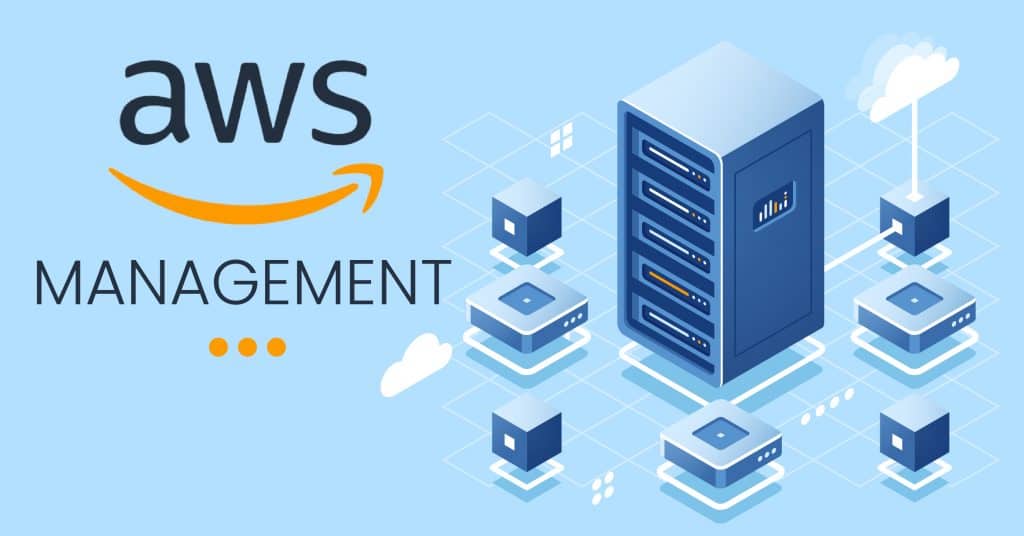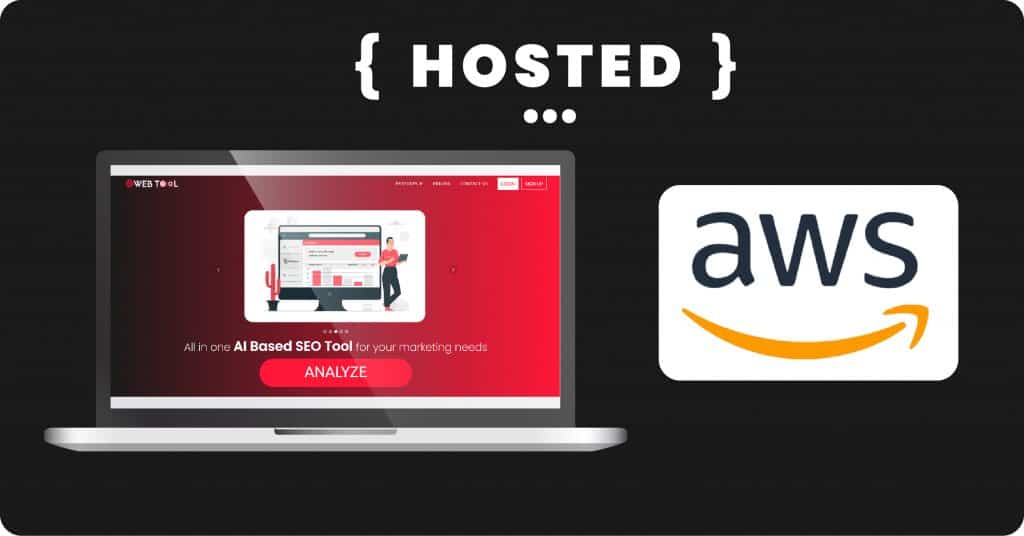FILL OUT THE FORM BELOW & ALLOW US TO TAKE YOUR AWS MANAGED SERVICES TO A WHOLE NEW LEVEL!
Over the past decade, software deployments have only occurred regularly, largely due to the difficulty of server provision. When cloud providers introduced computer services, such as virtual machines, remote storage, and virtual network, a significant change took place: IT management realized that by using these new cloud services, lower hardware costs could be reduced, and infrastructure ownership could be a shared burden between IT infrastructure teams and developers. This document will discuss the emergence of applications in the cloud and will introduce you to other use cases to select services hosted on AWS management.

Monolithic use
Look at the software design of many legacy applications. You will see that they are built in a monolithic way, containing a large codebase with different modules, usually with a single database as a continuous framework. With the submission of this type of application, the strategy was similar compared to the deployment of clouds:
- Server supply pipe;
- Pipe that pushed the codebase to the specified server;
- Data communication engine pipeline to implement database schema changes;
- Both services installed behind the firewall;
- Measurements are made upside-down most of the time.
This technique is still used in some applications where the monolithic structure is still in use. But the difference today is now mainly distributed by cloud providers, standard equipment (e.g., AWS EC2) or managed computer services, such as the AWS Elastic Beanstalk.

Microservices Deployments
When the construction of the microservice arrived on the scene, deployment became more difficult. Therefore, the delivery strategy was significantly affected:
- Provision was needed not only for one machine but also for more equipment;
- Alignment between the parties was extremely difficult;
- Monitoring and logging became more complex due to the number of items.
- Having compatible pipes was difficult because all the teams/resources were independent;
- There was not just one but many details (usually one per service);
- More IT resources were needed: acquisition services, upload rates, etc.
In general, more DevOps work and synchronization was required. Although it takes a lot of effort to provide microservices infrastructure manually, many companies still do this to meet the needs of their business. However, as discussed below, managed services were a welcome arrival, as they significantly reduced the group’s burden for performance.

Current Use of Clouds
Today, the agile time and the high level of acceptance of microservices have encouraged cloud providers to offer many new services that make use easier. They did this mainly by removing the required server retention in the equation and allowing teams to use these different services with minimal adjustment required. These are called managed functions.
AWS identity and access management is a cloud-based service that you can use without having to worry about underlying hardware management: for example, in the Amazon ecosystem, you will find AWS Fargate, AWS Lambda, AWS Aurora, Amazon DynamoDB, and Elastic Beanstalk, among others. What do all those services have in common? The service provider, not your organization, is responsible for getting the deployment enabled on these forums.
Today’s post contains applications that use a combination of services/integration. This combination will be used in the future, but there will be a tendency to use highly managed tools with cloud API providers. To cite just one example: the standard Django program can be distributed to AWS Fargate via OAuth2 integration of Google APIs (maps, translations, etc.).
Although managed services are considered great for growth and ease of use, they come with generally higher costs and less customization. However, compared to the hours the engineer saved, it is quite worth it.
Program for AWS Managed Services
This section will introduce guidelines to help you choose various AWS-managed services, depending on the standard infrastructure and application-level requirements.
1. Integrated Solutions
There are many reasons to apply: attachment, separation, distribution, etc. If you move from monolith to microservices, you may want to use containers as a first step in separating objects into smaller independent services. Also, if you are creating an application from scratch with microservices, chances are, you will want to have a collection of containers representing various features/resources.
No matter what the reason or charge for using container containers, AWS management services offer a few controlled services that you can use for your deployment:
2. AWS ECS / Fargate
If you want to go with containers without orchestration and still want to have IAM and other AWS integration, then AWS Fargate is what you need. The good thing about Fargate is that you don’t have to pay attention to EC2 situations where the containers will work. Fargate completely frees you from any orchestration work. You create a Docker image, press it on AWS ECR, and then define the Fargate function that specifies the image you want to use. By doing this, you can find hundreds of containers that work for your app. Refer to the official guide “Getting Started with Amazon ECS using Fargate” for more details.
Note that Fargate comes with one major problem: intruder traffic. Once you have travelled this route, you must stick to it because there is no such service in other clouds.
3. AWS EKS
What if you choose a standard multi-container solution to run your app from various cloud providers? If losing a certain level of integration with a few AWS APIs is not a problem, then AWS EKS is what you need to check. AWS EKS covers you with a master node, but you will still need to be careful to define employee nodes. This means that you will need to define a variety of features, such as your pods and services, which will require a lot of configuration work, thus representing a decrease in the deployment of applications via AWS EKS. But if you are given an increase in the skills you acquire, the extra work is worth it.
Another good thing about AWS EKS is that moving your collection to another cloud provider will not be so difficult because Kubernetes Deployments are standard, which means setting up your nodes will still work on other clouds.
4. FaaS Solutions
If your app (or part of it) has a collection of small tasks that can be performed differently and do not require a constant operation, AWS Lambda is the way to go. Lambda allows you to define sub-services by providing a zero server easily. Some of the benefits of travelling with FaaS are:
- You will save money because jobs will not always be available;
- It comes with AWS integration, so, for example, you can speak to the AWS database with minimal code;
- The API port comes automatically, so you can use it to your advantage to get your final points;
- It auto-scales by default.
There are many use cases of AWS Lambda. Among other things, you can use it:
- Background mobiles and small web APIs;
- Event response services for other AWS services;
- Default functions.
Lambda is not all cases. Although Lambda supports multiple languages and allows you to attach decent resources to your work, you still need to worry about the cold start, working time limits, access to the vendor, etc. Remember, jobs are about small services. Also, keep in mind that they will weigh as much as the code within the work scales.
If you are starting with the AWS Lambda, please refer to this link for more views.
Integration of API Services
In addition to the integrated solutions with Lambdas, AWS configuration management offers a wide range of services for specific use cases, for example:
- AWS S3: Storage facility;
- Amazon Aurora: Relational database engines;
- AWS CloudFront: CDN service.
It will always be easier to deal with managed services than to use your solutions. In addition, do not limit yourself to AWS services only. There are many cloud companies out there with great donations. Epson, for example, has an automated solution to help you monitor and troubleshoot cloud computing.
Unlock value from IT investment. Manage costs, management and risks with our comprehensive services
IT needs to increase speed, and low-cost fuels public cloud skiing. A growing number of organizations are opting for Amazon Web Services (AWS), a worldwide public platform, with its full range of integrated computer, storage, mobile and business applications. And new services are being added at an unprecedented rate.
A growing number of organizations opt for the Amazon Web Services (AWS) cloud with a host of full-featured computer services, storage, mobile and business applications.
As more businesses move to AWS API management, organizations are being challenged by providing corporate oversight, security and cost controls across the cloud estate. Good governance often leads to overuse of cloud services, unspent and unplanned spending, and situations with open, unsafe ports.
Full support for AWS
THATWARE AWS-managed services provide design, delivery and support for daily computer operations, storage and virtual network infrastructure within the AWS cloud. We monitor and control software and system configurations, and our financial and administrative services help reduce uncontrolled use.
Both AWS and THATWARE Technology-enabled services empower the business despite the hybrid cloud. You can go up and down to continue meeting your ever-changing business needs, ensuring that your IT costs and services will always align with business demand.
THATWARE helps you see the full financial and operational benefits of AWS with end-to-end services, including Advisory Services to identify cloud-based migration services and Application Transformation and Cloud Migration Services to take the risk of removing key applications from complex business areas.
We offer a wide range of managed services that are tailored to meet IT clients and financial goals. Whether you have critical workloads that require a full range of services or want a light touch service to control costs, we can measure and tailor to meet your needs.
THATWARE is specifically designed to support AWS. We combine the most advanced monitoring tools in the industry with our AWS Center of Excellence and more than 700 certified AWS professionals, which give your organization control over, and greater visibility to your AWS environment.
Proven success with AWS
Our AWS-managed services help customers make the best use of their AWS applications and benefit from the flexibility used models based on infrastructure as a service and platform as a service. In addition to cost management, these firms benefit from agile development and the delivery of traditional cloud applications. For example:
- The global insurance giant has asked THATWARE to help the company stand out from its competition by incorporating the latest digital technologies into its customer service. THATWARE helped move the company to the AWS cloud, transforming digital customer systems into the AWS cloud operating model, complete with security and governance. As a result, the company eventually became completely paperless and can now use next-generation technology like the internet of machine learning.
- THATWARE has assisted the global telecommunications provider in transferring its responsibility to AWS and revitalize complex systems by modernizing the entire system stack and reducing infrastructure and operating costs. The customer has also improved its cyber durability thanks to the AWS architectural design from THATWARE.
More service options
THATWARE provides AWS cloud managed Services and two categories of regulated services:
Advisory Services – Quickly check your current status and create a roadmap for how to manage AWS resources.
- Analyze the existing AWS environment to suit safety, compliance, flexibility and mitigation requirements.
- Ensure that the construction of the AWS is enhanced to the expected workload.
- Ensure that the AWS environment is strategically designed to reduce costs, meet compliance requirements, and be more accessible and secure.
Silver Service Bundle – Manage your AWS environment by accessing resources with tools.
- AWS compiled a comprehensive report on billing, management and reporting, and sound financial practices
- THATWARE account services, including administration and collaboration
- Help desk support
- Limited service costs for customer needs
Gold Service Bundle – Get all the features of the Silver Bundle and fully managed services.
Suspension of infrastructure
- Workflow management of integrated IT integration, automation and governance
- Visual equipment management, storage and guest applications, including packing, monitoring and backup/restoration
- Security management, including Active Directory, firewall, storage protection, virtual network and antivirus services
- Service costs are for increased demand
Our bulk of the service is tailored to the needs of our customers. For example, a fully managed service may not be required for load/testing tasks. Our services bring good practices and governance to the public cloud, so you can be sure of delivering the most important responsibility to the cloud, driving value and power.
Our approach to looking at AWS is as traditional as the cloud itself. CloudOps’s fully capable delivery capabilities replace the traditional siloes of storage, calculation and network communication. The result: a mature cloud environment that can quickly consume new cloud services to increase sharpness and meet business objectives. Combined with hybrid clouds and multi-cloud capabilities, you can consume many cloud services and manage costs with an integrated platform, integrated catalogue and a personalized portal via ServiceNow.
Leading Amazon Partner
THATWARE and AWS recognize that forward-thinking clients are accelerating the adoption of cloud services and are looking for proven technology for deploying and integrating AWS cloud services into their IT environment. THATWARE provides a complete range of AWS services, including AWS Operations Services.
As an AWS management service provider and Premier Consulting Partner, THATWARE assists clients to acquire, migrate, update, and manage the AWS platform application functions. THATWARE helps customers across all regions and industries to unlock value in their IT investment and take full advantage of the digital economy. We are a few global IT services companies that can cost-effectively integrate public cloud, private and virtual private cloud, and computer systems into a fully functional one.
Contact us to learn more about ThatWARE Managed Services for AWS.


